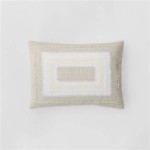Persian Style Rug Home Decor: A Timeless Elegance
Persian style rugs, renowned for their intricate designs, vibrant colors, and exceptional craftsmanship, represent a significant investment in home decor. These rugs, often inspired by the rich artistic heritage of Persia (modern-day Iran), contribute a sense of timeless elegance and sophistication to any interior. Understanding the characteristics and applications of Persian style rugs is crucial for incorporating them effectively into a cohesive and visually appealing design scheme.
The term "Persian style rug" encompasses a broad category that includes both authentic Persian rugs and rugs that emulate Persian designs, patterns, and weaving techniques. Authentic Persian rugs are made in Iran and possess unique qualities dictated by the specific region of origin, the materials used, and the individual weaver's skill. Rugs made outside of Iran but exhibiting Persian characteristics are categorized as Persian style rugs. These can range from high-quality hand-knotted pieces to machine-made reproductions.
The enduring appeal of Persian style rugs lies in their ability to seamlessly blend with a wide range of interior design styles, from traditional and classic to contemporary and eclectic. Their intricate patterns serve as a focal point, adding visual interest and depth to a room. The rich color palettes, often featuring deep reds, blues, and golds, introduce warmth and vibrancy. Furthermore, the inherent durability of well-made Persian style rugs ensures longevity, making them a valuable addition to any home.
Key Elements of Persian Style Rug Design
Persian style rugs are distinguished by several key design elements that contribute to their unique aesthetic. These elements include the types of knots used, the patterns and motifs incorporated, and the materials from which they are constructed. Understanding these elements is fundamental to appreciating the artistry and value of these rugs.
The knotting technique is a primary indicator of quality and craftsmanship. Persian knots, also known as asymmetrical knots, and Turkish knots, also known as symmetrical knots, are the two main types used in rug weaving. Persian knots generally allow for more intricate detail in the design, while Turkish knots offer greater durability. The density of the knots, measured in knots per square inch (KPSI), is another crucial factor. Higher KPSI indicates a finer weave, greater detail, and generally a higher value.
The patterns and motifs featured in Persian style rugs are deeply symbolic and often reflect the cultural history and traditions of the region where the rug was woven. Common motifs include floral designs (such as the Herati pattern, depicting stylized flowers and leaves), geometric patterns (such as the medallion design, featuring a central focal point), and animal representations (such as the Tree of Life design, symbolizing connection and growth). Understanding the meaning behind these motifs can enhance the appreciation of the rug's artistic merit.
The materials used in the construction of Persian style rugs significantly impact their appearance, durability, and value. Wool is the most common material, celebrated for its resilience, luster, and ability to absorb dyes. Silk is a more luxurious material, prized for its sheen and softness, and often used in finer rugs to create intricate details. Cotton is typically used for the foundation of the rug, providing strength and stability. The quality of these materials, the skill of the dyer, and the natural dyes used will all influence the overall quality and value of the rug.
Integrating Persian Style Rugs into Home Decor
Incorporating Persian style rugs into a home decor scheme requires careful consideration of various factors, including the size and shape of the rug, the existing color palette of the room, and the overall style of the interior. Choosing the right rug can enhance the aesthetic appeal of the space and create a harmonious and inviting atmosphere.
The size and shape of the rug should be proportionate to the dimensions of the room and the furniture arrangement. In a living room, a large rug can anchor the seating area, creating a defined space and unifying the furniture. In a dining room, the rug should be large enough to accommodate all the chairs, even when pulled out. In a bedroom, a smaller rug can be placed at the foot of the bed or on either side to add warmth and visual interest. The shape of the rug (rectangular, square, round, or oval) should complement the shape of the room and the furniture.
The color palette of the rug should complement the existing color scheme of the room. Persian style rugs often feature a range of colors, and selecting a rug that incorporates colors that are already present in the room can create a cohesive and harmonious look. For example, if the walls are painted a neutral color, a rug with vibrant colors can add a pop of visual interest. Alternatively, if the walls are already brightly colored, a rug with more muted tones can provide a sense of balance.
The overall style of the interior should also be considered when selecting a Persian style rug. In traditional interiors, rugs with classic patterns and rich colors can enhance the sense of elegance and formality. In contemporary interiors, rugs with more geometric patterns or abstract designs can add a touch of modernity and sophistication. In eclectic interiors, rugs with a mix of patterns and colors can contribute to the overall sense of personality and character. A vintage or antique Persian rug can add character to a modern room acting as an antique, conversation piece.
Caring for Persian Style Rugs to Preserve Their Beauty
Proper care and maintenance are essential for preserving the beauty and longevity of Persian style rugs. Regular cleaning, professional cleaning, and preventative measures can help protect the rug from damage and ensure that it remains a cherished heirloom for generations.
Regular cleaning is crucial for removing dust, dirt, and debris that can accumulate in the rug's fibers. Vacuuming the rug regularly, using a vacuum cleaner without a beater bar or with the beater bar set to the highest setting, can prevent dirt from becoming embedded in the fibers. It is also important to rotate the rug periodically to ensure even wear and prevent fading from sunlight.
Professional cleaning is recommended every one to three years, depending on the rug's age and traffic. Professional rug cleaners have the knowledge and equipment to clean Persian style rugs safely and effectively, removing stains and odors without damaging the delicate fibers. It is important to choose a rug cleaner who specializes in cleaning Persian rugs and uses gentle, pH-neutral cleaning solutions.
Preventative measures can also help protect Persian style rugs from damage. Using rug pads underneath the rug can prevent it from slipping and sliding, as well as protect the floor from scratches and dents. Avoiding placing heavy furniture directly on the rug can prevent crushing and distortion of the fibers. Addressing spills and stains immediately can prevent them from setting in and becoming permanent. Sunlight exposure should be minimized to prevent fading of natural dyes.
Investing in a Persian style rug is not merely purchasing a floor covering; it is acquiring a piece of art, a testament to cultural heritage, and a long-lasting investment in the beauty and comfort of a home. Understanding the nuances of Persian style rug design, integration, and care ensures that this timeless elegance is appreciated and preserved for years to come.

Decorating With Antique Rugs Oriental Persian Rug Home Decor

Decorating With Antique Rugs Oriental Persian Rug Home Decor

Persian Style Rug Red And Blue Oriental Home Decor Rugs

Moroccan Carpet Livingroom Home Decor Bedroom Persian Rug Sofa Floor Mat Modern Area Joom

Decorating With Antique Rugs Oriental Persian Rug Home Decor

Retro Persian Carpet Bohemian Living Room Area Rug Ethnic Style Water Absorbent Dirty Resistant Homestay Hotel Non Shedding Bedroom Accent Cute Aesthetic Stuff Home Decor Temu
The Benefits Of Vintage Rug Design For Home Decor Toos Mashhad Carpet

Nordic Palace European Style American Classical Persian Carpet Turkish Imported Living Room Coffee Table Household Rectangle Rugs In

Outdoor Indoor Vintage Boho Area Rugs Non Slip Persian Soft Stain Resistant Rug Machine Washable Waterproof Carpet For Living Room Bedroom Nursery Patio Garden Yard Decor Home

Persian Style Home Decorating Ideas Gray Rug Living Room Big Rugs Large
Related Posts







